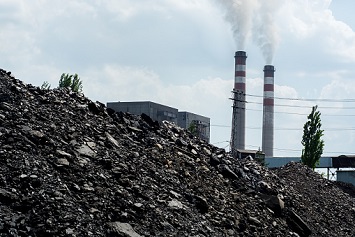The EPA is proposing not to use its authority under Section 108(b) of the Comprehensive Environmental Response, Compensation, and Liability Act (CERCLA or Superfund) to impose financial responsibility requirements on facilities in the electric power generation, transmission, and distribution sector.
According to the Agency, the risks of releases or threatened releases of hazardous substances facilities in the sector pose to human health and the environment are being adequately addressed by existing regulatory programs and voluntary practices.
The EPA based the proposed action on its analysis of cleanup cases, existing financial responsibility requirements, and enforcement actions. The Agency adds that releases of coal combustion residuals (CCRs)—the power-plant hazardous substance that most concerns those calling for a financial responsibility requirement—are being addressed by the Agency’s 2015 CCR rule, which “significantly reduce the risk of a Superfund response being necessary at these facilities.
This is the second class of facilities for which the EPA has declined to require financial responsibility requirements. In February 2018, the Agency decided not to follow through on an Obama-era proposal to impose financial responsibility requirements on hard-rock mining facilities.
Highest Risks Addressed First
CERCLA Section 108(b) requires that the EPA develop regulations that require classes of facilities to establish and maintain financial responsibility consistent with the degree and duration of risk associated with the production, transportation, treatment, storage, or disposal of hazardous substances. Paragraph (b)(1) also directs that priority in the development of requirements must be accorded to those classes of facilities, owners, and operators that present the highest level of risk of injury.
Court Order
In 2008, environmental groups sued the EPA for not meeting its Section 108(b) obligation. The Agency responded to the suit in 2010 by saying it would develop financial assurance rules for the hard-rock mining industry and for three other industries—chemical manufacturing; petroleum and coal products manufacturing; and electric power generation, transmission, and distribution. When the EPA failed to follow up with an actual proposal, environmental groups returned to court, whereupon the Agency was ordered to issue a proposed financial assurance rule for the hard-rock mining industry by December 1, 2016, and to publish a final rule 1 year later. The Agency was also ordered to follow that action with Section 108(b) decisions, in no particular order, for the three additional industrial sectors.
The court expressly stated that its order “merely requires that EPA conduct a rulemaking and then decide whether to promulgate a new rule—the content of which is not in any way dictated by the [Order].” In other words, the court did not direct the EPA to impose financial responsibility requirements on any sector, although that is one regulatory option.
Low Impact on Fund
Section 108(b) directs the EPA to impose financial responsibility on specific sectors based in part on Superfund experience, as well as experience involving commercial insurers, courts settlements and judgments, and voluntary claims satisfaction. In its proposed decision, the Agency says it identified a small number of cleanup cases that occurred under a modern regulatory framework, which also entailed some Superfund expenditure.
“Overwhelmingly, however, the industry was found to be practicing responsibly within the current regulatory framework, with just 2 sites out of the 10,330 establishments in the industry indicating a significant impact to the Fund under a modern regulatory framework,” the Agency states. “The language in Section 108(b) on determining the degree and duration of risk and on setting the level of financial responsibility confers a significant amount of discretion on EPA. It is EPA’s assessment that the small set of federally-funded cleanup cases due to recent contamination does not warrant the imposition of financial responsibility requirements on the entire Electric Power Generation, Transmission and Distribution industry under CERCLA Section 108(b).”
The EPA adds that its analysis and proposed finding are not applicable to and do not affect, limit, or restrict the Agency’s authority to take a response action or enforcement action under CERCLA with regard to any facility in the sector.
CCR Spills
Much of the concern about CCRs emerged after the 2008 coal ash spill at a Tennessee Valley Authority facility in Tennessee, which cost over $1 billion to clean up. Recently, North Carolina regulators required Duke Energy to completely excavate its remaining coal ash ponds to eliminate the risk of a spill and stop groundwater and surface water pollution. Duke estimates the cost of cleanup at more than $9 billion.
Responding to the EPA’s proposal, Earthjustice referenced a report it developed with the Environmental Integrity Project, which stated that 91 percent of reporting coal plants are contaminating groundwater at hundreds of sites around the country.
“In today’s proposal, EPA fails to consider this widespread evidence of groundwater contamination and fails to consider the risk that utilities may be unable to pay for the cleanup,” says Earthjustice.

